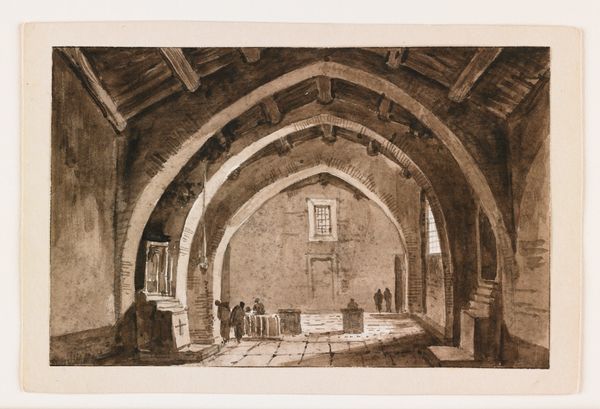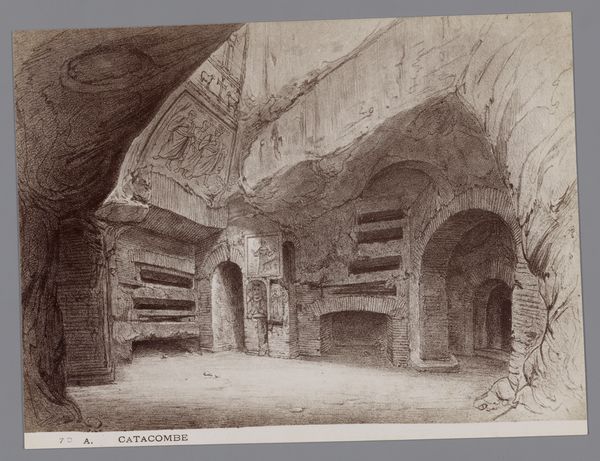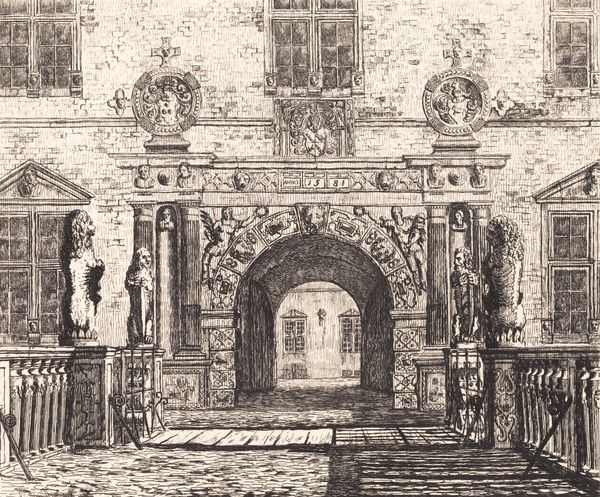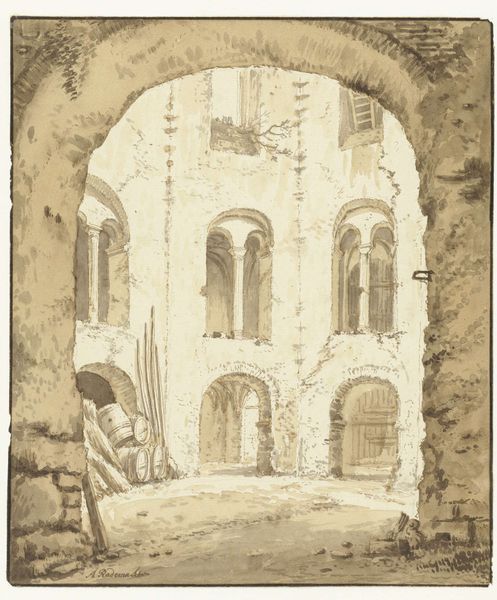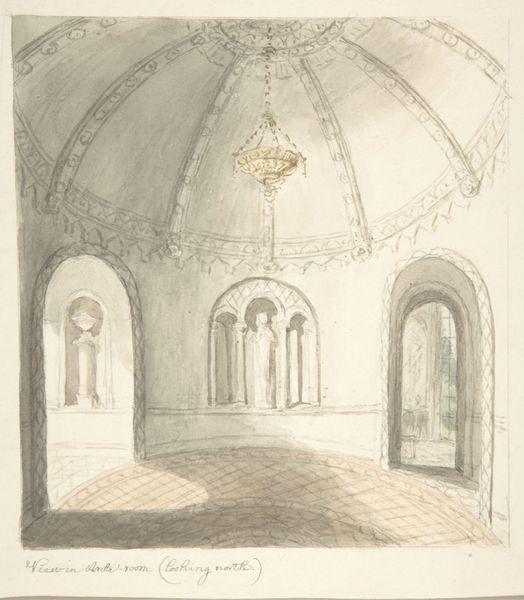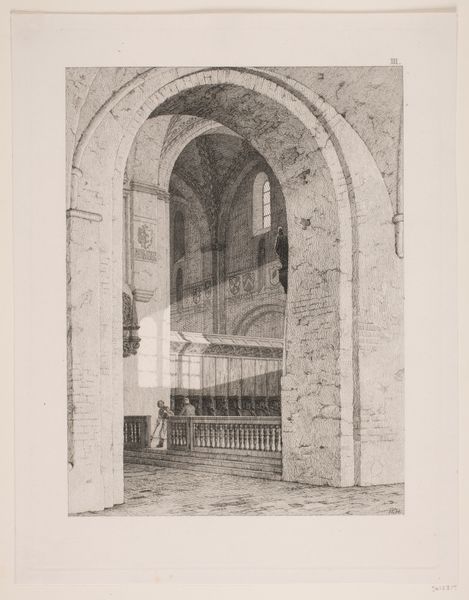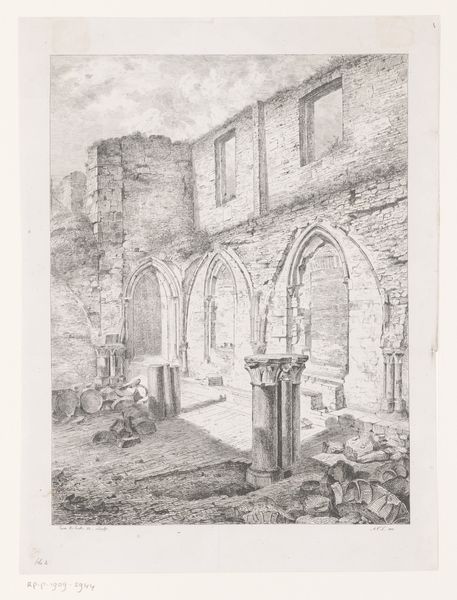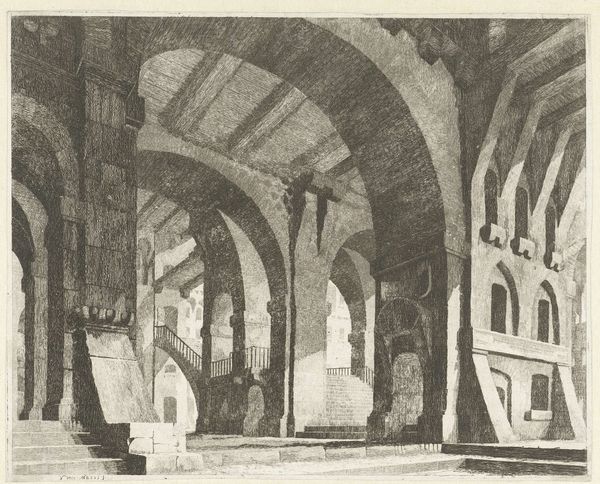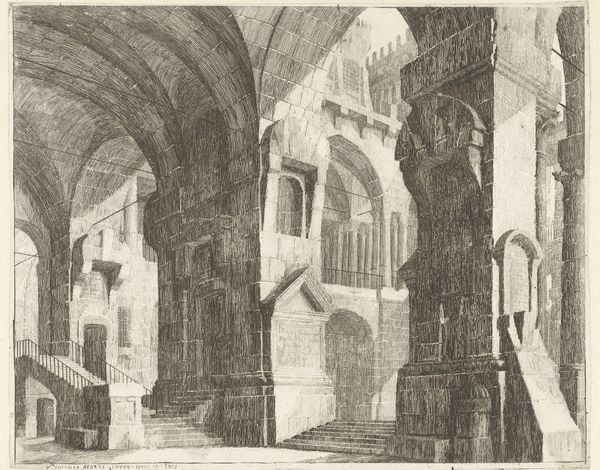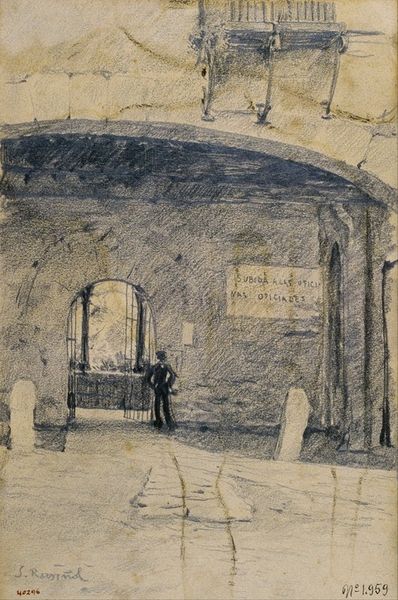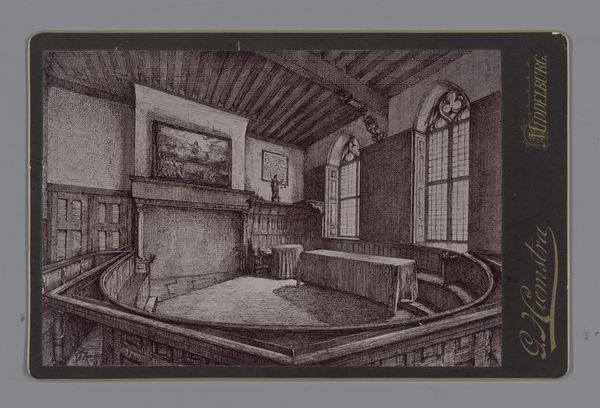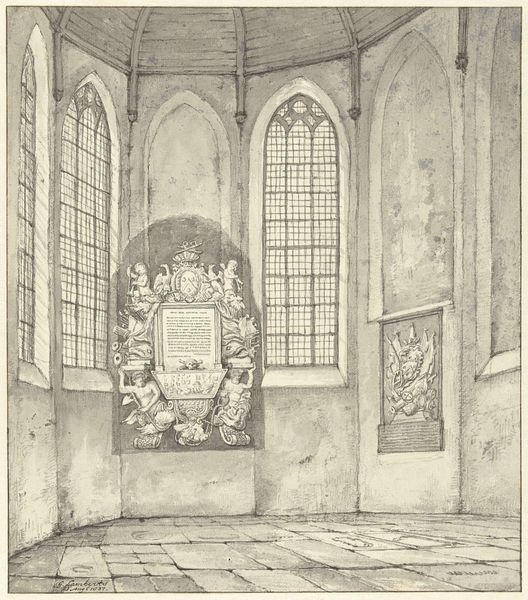
drawing, print, etching
#
drawing
#
medieval
# print
#
pen sketch
#
etching
#
landscape
#
line
Dimensions: Plate: 4 15/16 × 7 3/8 in. (12.6 × 18.7 cm) Sheet: 9 1/2 × 13 7/16 in. (24.2 × 34.2 cm)
Copyright: Public Domain
Curator: This is John Sell Cotman's "Capel Carrig, Caernarvonshire," etched in 1838. It's currently held here at the Metropolitan Museum of Art. Editor: The etching immediately strikes me as austere. The strong lines create a stark contrast between light and shadow, evoking a sense of desolation. Curator: Absolutely, but there's more to it than just visual austerity. Consider the political and social backdrop of 19th-century Britain. Ruins like these spoke to the anxieties around industrialization and displacement, especially in Wales, where cultural identity was under pressure. This image captures that sense of a lost past, a place of worship now crumbling. Editor: I see your point, yet the composition itself holds significant interest. Notice how Cotman uses hatching and cross-hatching to define form and volume, directing the eye toward the interior spaces. The repetition of architectural elements creates a rhythm, almost musical in its cadence. Curator: I appreciate your read of the architecture as musical! For me, it is a landscape of power in decay. These ruined religious spaces weren’t just aesthetically pleasing; they were potent symbols of resistance against the prevailing Anglican order and Anglicization more generally, representing a distinctly Welsh religious and cultural identity. Editor: I can't deny the symbolic weight you point out. Even the limited tonal range reinforces that sense of melancholy—a visual lament for what has passed. Curator: Indeed. It's a reminder that even within seemingly simple landscapes, histories of power and resistance are etched in, demanding we look deeper than the surface. Editor: I concur. Cotman's rigorous attention to line and form encourages a deep contemplation on history. It also proves the medium's power to express more than simple objective observations. Curator: It becomes clear, looking at Cotman’s Welsh etching, that he memorializes the physical spaces that represent lost power, a silent resistance etched in ink and stone.
Comments
No comments
Be the first to comment and join the conversation on the ultimate creative platform.
